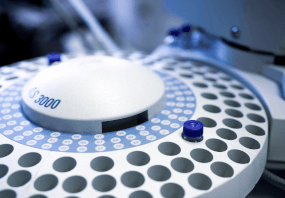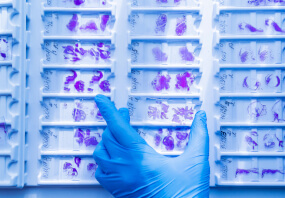General description
Monoclonal Anti-Orai1 (mouse IgG1 isotype) is derived from the hybridoma ORAI1-89 produced by the fusion of mouse myeloma cells and splenocytes from BALB/c mice immunized with a synthetic peptide located near the C-terminus of human Orai1, conjugated to KLH. Orai1, also called Calcium release-activated calcium channel protein 1 (CRACM1), is an evolutionary conserved plasma membrane protein. Orai1 is predicted to contain four transmembrane domains with its N- and C-termini in the cell cytoplasm.
ORAI calcium release-activated calcium modulator 1 (Orai1), also known as transmembrane protein 142A (TMEM142A), is encoded by the gene mapped to human chromosome 12q24.31.{49}. The encoded protein contains four transmembrane helices with highly conserved glutamate residues in transmembrane helices 1 and 3.
Immunogen
synthetic peptide located near the C-terminus of human Orai1, conjugated to KLH. The corresponding sequence differs by 2 amino acids in rat and mouse.
Application
Monoclonal Anti-Orai1 antibody has been used in
- immunoblotting,
- immunofluorescence
- immunoprecipitation
- proximity ligation assay.
Monoclonal Anti-Orai1 antibody produced in mouse has been used in proximity ligation assay.
Biochem/physiol Actions
Orai1 essential for store-operated calcium entry in T cells and fibroblasts. Store-operated calcium entry is mediated by Ca2+ release-activated Ca2+ (CRAC) channels, following Ca2+ depletion from the endoplasmic reticulum (ER) stores, caused by stimulation of immune cells. This process is crucial for gene transcription, proliferation and cytokine release. Mutations in two highly conserved glutamate residues, E106 and E190, diminish Ca2+ influx and promote changes in ion selectivity, providing strong evidence that Orai is a pore subunit of the CRAC channel. Orai1 co-localizes with STIM1 (stromal interaction molecule 1) near the plasma membrane after store depletion. A point mutation in Orai1 is responsible for the genetic defect in store-operated Ca2+ entry and I-CRAC in cells of the hereditary severe combined immune deficiency (SCID) syndrome patients.
Physical form
Solution in 0.01 M phosphate buffered saline, pH 7.4, containing 15 mM sodium azide.
Disclaimer
Unless otherwise stated in our catalog or other company documentation accompanying the product(s), our products are intended for research use only and are not to be used for any other purpose, which includes but is not limited to, unauthorized commercial uses, in vitro diagnostic uses, ex vivo or in vivo therapeutic uses or any type of consumption or application to humans or animals.
Shipping Information:
Dry Ice Surcharge & Ice Pack Shipments: $40
More Information: https://cenmed.com/shipping-returns
- UPC:
- 51182400
- Condition:
- New
- Availability:
- 3-5 Days
- Weight:
- 1.00 Ounces
- HazmatClass:
- No
- MPN:
- SAB4200273-200UL
- Temperature Control Device:
- Yes












